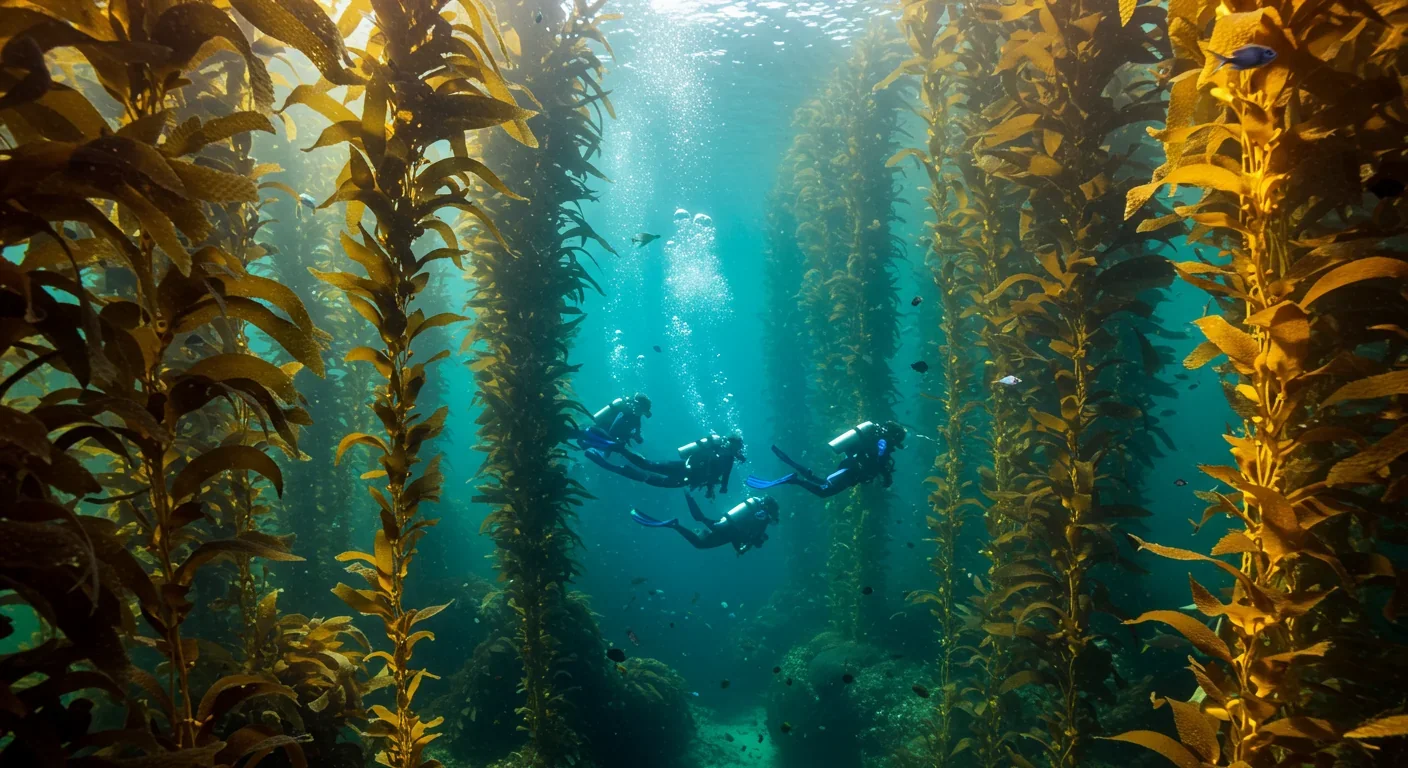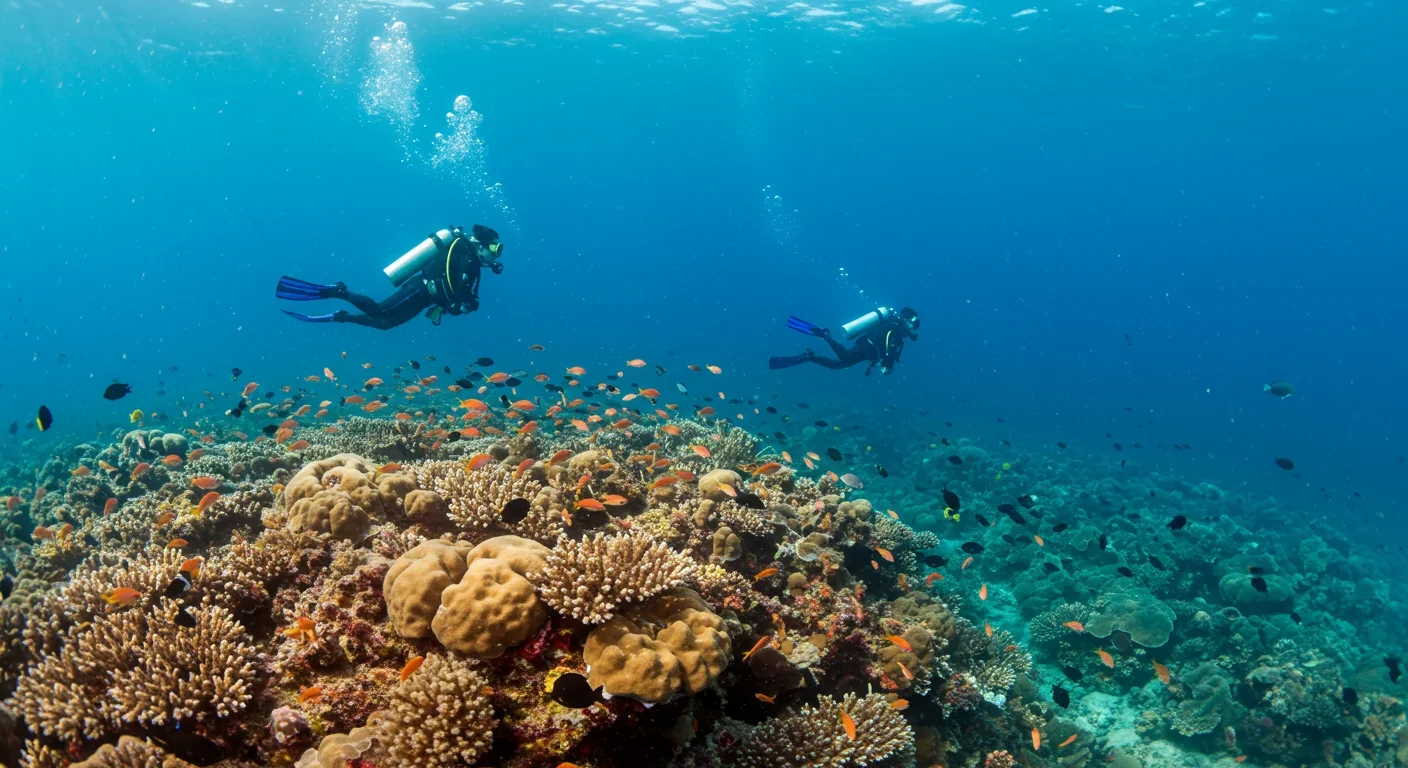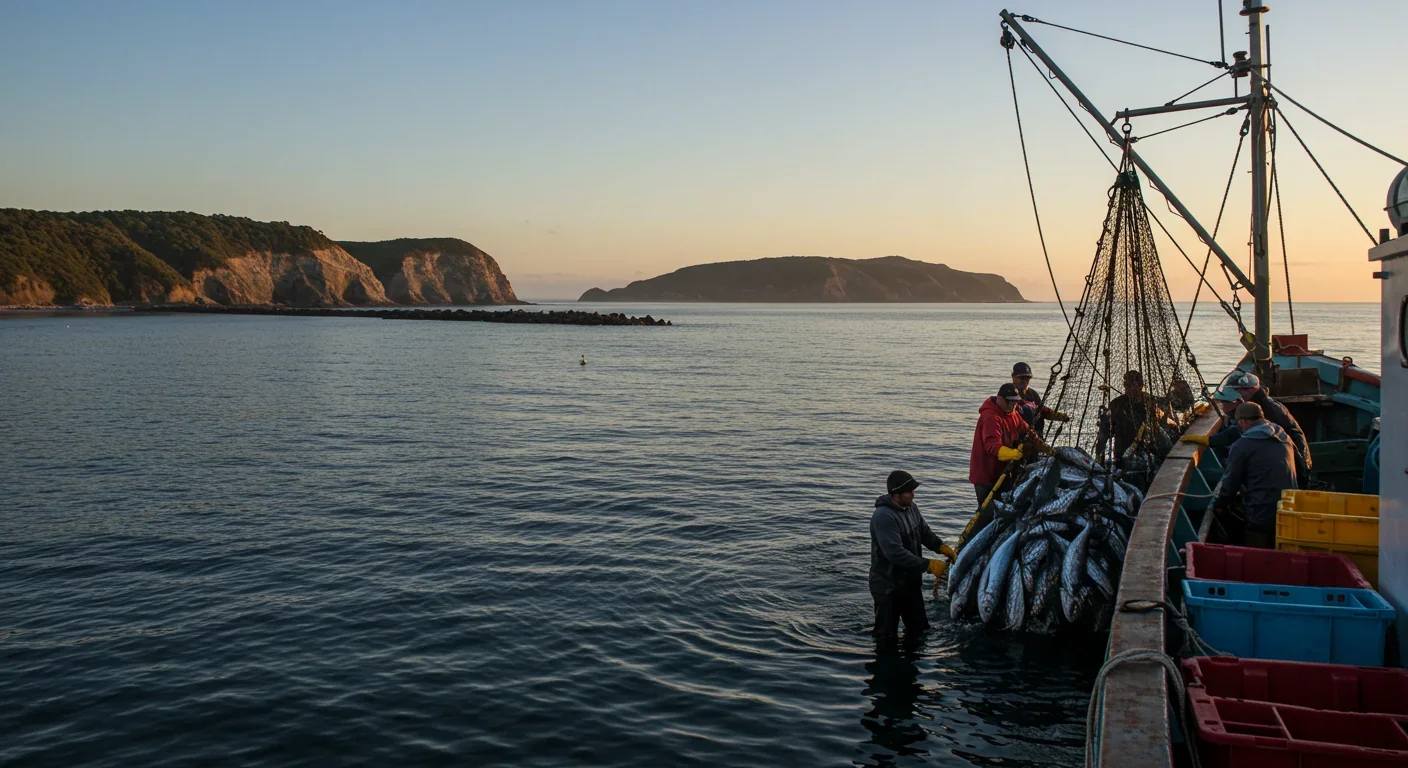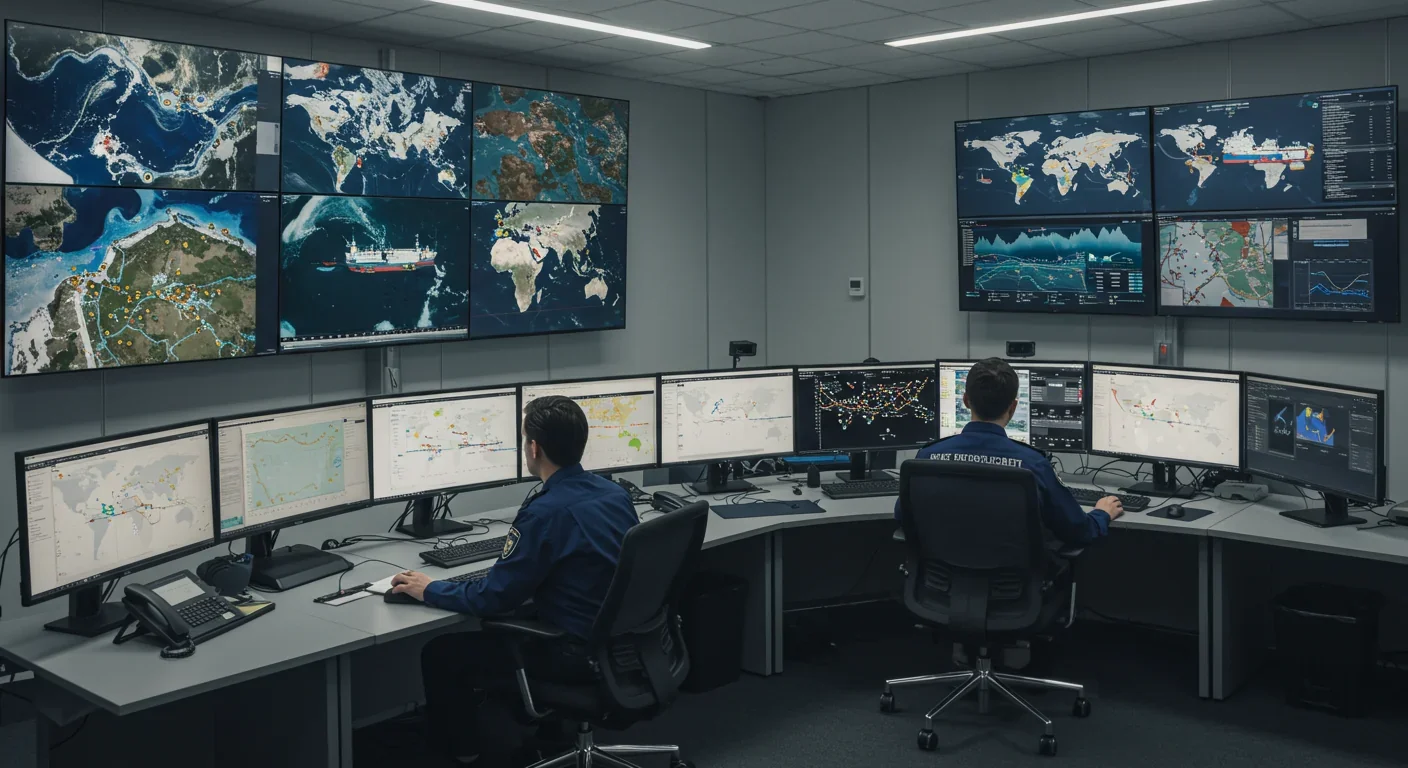Kelp Forests and Climate Change: Marine Permaculture Guide

TL;DR: No-take marine zones can restore fish populations by 463% and revive ocean ecosystems, but only when they're properly enforced, adequately sized, and designed with fishing communities rather than imposed on them.

By 2030, the United Nations wants 30% of the world's oceans protected. Yet New Zealand, a self-proclaimed conservation champion, claims 30% protection while actually safeguarding less than 0.5% of its waters from fishing. This gap between promise and reality reveals the central tension in ocean conservation: no-take marine zones can restore ecosystems beyond our wildest expectations, but only when they're real, enforced, and designed with fishing communities rather than against them.
The stakes couldn't be higher. Global fish populations have collapsed by 90% since industrial fishing began, threatening both ocean ecosystems and the 3 billion people who depend on seafood for protein. No-take zones, where all fishing and extractive activities are banned, offer a radical solution. But do they actually work? And if so, why do so many fail?
The evidence from successful no-take zones reads like ecological fantasy. At Cabo Pulmo, Mexico, fish biomass increased 463% in just a decade after local fishing communities agreed to stop fishing entirely. What was once an overfished wasteland now attracts divers worldwide, creating tourism revenue that far exceeds what fishing ever provided.
New Zealand's Poor Knights Islands show similar results. Protected as a no-take zone, the area exploded with life: lush kelp forests, abundant predators, and thriving biodiversity. Just kilometers away, unprotected areas look like barren moonscapes, covered in sea urchins that devoured everything after overfishing removed predators.
Research from the Great Barrier Reef found fish populations inside no-take zones were significantly larger and more abundant. A 2018 survey at Pohatu Marine Reserve showed blue cod biomass was 6.6 times greater inside the reserve, with species richness nearly tripling from 10 to 28 species.
The spillover effect is now well-documented. As fish populations explode inside protected zones, they overflow into surrounding waters. Studies show that well-managed no-take zones can boost catches in adjacent fishing grounds, sometimes within just a few years.
But here's the catch: these success stories share specific conditions. Remove even one, and the system can collapse.
Research across dozens of marine reserves reveals that effectiveness isn't random. It depends on five critical factors.
Enforcement: This is non-negotiable. "Paper parks," areas protected on maps but not in reality, are nearly worthless. At Pohatu Marine Reserve, seven boats were caught poaching in just two months during 2017-18. Satellite tracking and AI monitoring show that while most bans are respected, illegal fishing persists in remote areas.
Without boots on the ground or satellites overhead, designation means nothing. This is why New Zealand's claim of 30% ocean protection rings hollow when enforcement resources protect less than half a percent.
Size matters: Pohatu Marine Reserve, despite showing impressive fish recovery, faces limitations because it's too small. Edge effects and limited habitat availability constrain how much populations can grow. Research shows that reserves need to be large enough for fish populations to establish themselves without constant pressure from boundaries. Small reserves might protect some species, but they can't deliver the ecosystem-wide transformations seen at places like Cabo Pulmo.
Community buy-in: This is where most reserves either soar or crash. The most successful no-take zones aren't imposed from above; they're co-designed with fishing communities who understand both the crisis and their stake in the solution.
Community-based reserves in Mexico demonstrate this principle beautifully. Annual monitoring costs range from 23 to 3,561 MXN per hectare (median: 1,130 MXN/ha), representing just 0.3% to 55% of the extractive value of biomass in the reserves, with a median of 5.5%. In other words, the economic benefits vastly outweigh operational costs when communities manage their own waters.
At Cabo Pulmo, local fishers didn't just accept the no-take zone; they designed it, patrol it, and now prosper from it. They transformed from fishers to tourism guides, and their children learn ocean stewardship through programs like Young Ocean Explorers, which connects youth to marine protection.
Connectivity: Marine life doesn't respect boundaries. For no-take zones to rebuild regional fish populations, they need to connect to other protected areas or key habitats. Research on marine connectivity shows that isolated reserves can maintain local populations, but networks of protected areas enable genetic diversity, resilience to climate change, and wider ecosystem recovery.
Time horizon: Ecosystems don't bounce back overnight. While some benefits appear within 5-10 years, full recovery takes decades. Cabo Pulmo's transformation happened over 15 years. Pohatu showed measurable improvements between 2001 and 2018. Politicians and communities need patience and long-term commitment.

The controversy around no-take zones isn't primarily scientific; it's social and economic. For fishing communities already struggling with declining catches and rising costs, being locked out of traditional fishing grounds feels like punishment for an industry-wide problem they didn't create alone.
The criticism cuts deeper in developing nations where fishing isn't recreation or commerce, it's survival. When conservationists from wealthy countries push for ocean protection in regions where communities depend on daily catches for food and income, the conversation shifts from ecology to environmental justice.
Research on community perceptions reveals a stark divide. Fishers who participate in MPA co-design and see enforcement applied fairly tend to support protection, even when it restricts their activities. Those who feel excluded from decision-making, or watch illegal fishing go unpunished while they comply, become hostile to conservation efforts.
The economic argument isn't simple either. While spillover effects can boost adjacent fisheries, this benefit takes time and depends on reserve design. In the short term, fishers lose access to productive grounds. If they're not compensated, included in alternative livelihoods, or convinced that long-term gains outweigh immediate losses, resistance is inevitable and justified.
Not all MPAs are no-take zones, and that's often by design. The Great Barrier Reef Marine Park uses a zoning system: some areas are fully protected no-take zones, while others allow certain types of fishing under strict regulations.
This hybrid approach attempts to balance conservation with economic needs. Partial protection zones allow sustainable fishing while prohibiting destructive practices like bottom trawling. The evidence shows they're better than nothing, but they don't deliver the dramatic ecosystem recovery that full no-take zones achieve.
Studies comparing different protection levels find a clear gradient: no-take zones show the highest biodiversity and biomass recovery, followed by partial restrictions, with unrestricted areas showing continued decline. The question becomes: is partial protection a pragmatic compromise or a half-measure that fails both conservation and fishing communities?
The UN's 30-by-30 target, protecting 30% of the ocean by 2030, has become the rallying cry for marine conservation. But the New Zealand example reveals the danger: countries can claim credit for "protection" that exists only on paper.
Currently, only about 8% of the ocean has any form of protection, and less than 3% is fully protected no-take zones. Reaching 30% would require protecting an area larger than Africa, an unprecedented conservation effort.
But quality matters more than quantity. Research from the Mediterranean shows that poorly designed or unenforced MPAs deliver minimal benefits. Meanwhile, well-designed no-take zones covering just 10% of an area can generate spillover effects that benefit the entire region.
The emerging consensus among marine scientists: we need both. Large areas with partial restrictions to allow sustainable fishing, and strategic no-take zones in ecologically critical areas where ecosystems can fully recover and seed surrounding waters.
Economics often determines success or failure. Community-based MPAs in Mexico found a promising model: the extractive value of biomass in reserves typically exceeds monitoring costs, meaning communities can fund protection through sustainable limited extraction in buffer zones while maintaining core no-take areas.
This "Conservation Finance Area" approach aligns conservation with local economic interests. Rather than depending on external philanthropy or government funding (which often disappears), communities create self-sustaining systems. They protect marine life not out of altruism alone, but because it makes financial sense.
Tourism revenue from diving and ecotourism in places like Cabo Pulmo often exceeds what fishing ever generated. A single diver might pay $100 to see the fish that would have sold for $5 at market. But this model only works in areas with tourism infrastructure and appeal, leaving many communities unable to replicate it.
The economic calculus changes dramatically based on location, species, and community capacity. What works in Mexico's Sea of Cortez might fail in remote Pacific islands. Research on economic impacts shows clear winners and losers: recreational fishers and tourism operators often benefit, while commercial fishers, especially those without alternative livelihoods, bear the costs.
Enforcement, long the Achilles heel of ocean protection, is undergoing a revolution. Satellite monitoring combined with AI can now track fishing vessels in real-time, even in the most remote MPAs. Systems can identify illegal fishing patterns, alert authorities, and create accountability where patrol boats could never reach.
This technology doesn't eliminate the need for community buy-in, but it makes enforcement scalable and affordable. A single satellite can monitor thousands of square kilometers that would require dozens of patrol boats and hundreds of personnel to police conventionally.

The data also builds trust. When communities see that enforcement applies equally to all fishers, compliance increases. Research from Turneffe Atoll Marine Reserve shows that transparent, technology-enabled enforcement reduces conflicts and increases support for protection measures.
The future of no-take zones won't be dictated by conservation science alone. It will be shaped by political will, community power, economic incentives, and technological capability.
The science is settled: properly designed, enforced, and community-supported no-take zones work spectacularly well. They restore fish populations, protect biodiversity, boost adjacent fisheries through spillover, and can even generate economic benefits that exceed fishing revenue.
But "properly designed" does a lot of work in that sentence. It requires:
- Meaningful enforcement, whether through patrol boats, satellite monitoring, or community oversight
- Sufficient size and connectivity to allow ecosystem recovery
- Genuine community participation in design and management
- Long-term commitment measured in decades, not election cycles
- Economic support for displaced fishers, whether through alternative livelihoods, compensation, or sharing MPA benefits
The countries racing toward 30% protection by 2030 face a choice: create paper parks that check boxes and fail ecosystems, or invest in real protection that transforms both ocean health and human communities.
Research from Argentina's San Antonio Bay shows that even failed "paper parks" can be transformed through community cohesion and redesign. It's not too late to fix broken protection, but it requires admitting failure and empowering communities to lead solutions.
Every conversation about no-take zones eventually returns to Cabo Pulmo. It's the shining example that drives conservation efforts worldwide.
But it's also an outlier. A small community with strong social cohesion, tourism potential, and government support achieved something remarkable. Can we replicate it globally?
Research from the Black Sea suggests partial restrictions might be more feasible in heavily fished regions where full no-take zones would devastate communities. These aren't ideal from a conservation perspective, but they might be the best we can achieve politically.
The perfect shouldn't be the enemy of the good, but the good shouldn't masquerade as the perfect. When we celebrate paper parks as equivalent to no-take zones, we deceive ourselves about ocean health.
The science is clear: we can have abundant oceans teeming with life, or continue current fishing practices. We cannot have both.
No-take zones offer a path to abundance, but only if we accept short-term restrictions, invest in enforcement, empower communities, and commit long-term. They're not painless, quick, or universally applicable.
But when they work, they work spectacularly. Coral reefs show improved health, fish populations recover beyond baseline levels, and coastal communities find new economic opportunities.
The question isn't whether no-take zones restore ocean health, it's whether we value that outcome enough to make it real. The gap between New Zealand's claimed 30% and actual 0.5% protection represents the gap between our stated values and actual choices.
By 2030, we'll know which path we chose.

Saturn's iconic rings are temporary, likely formed within the past 100 million years and will vanish in 100-300 million years. NASA's Cassini mission revealed their hidden complexity, ongoing dynamics, and the mysteries that still puzzle scientists.

Scientists are revolutionizing gut health by identifying 'keystone' bacteria—crucial microbes that hold entire microbial ecosystems together. By engineering and reintroducing these missing bacterial linchpins, researchers can transform dysfunctional microbiomes into healthy ones, opening new treatments for diseases from IBS to depression.

Marine permaculture—cultivating kelp forests using wave-powered pumps and floating platforms—could sequester carbon 20 times faster than terrestrial forests while creating millions of jobs, feeding coastal communities, and restoring ocean ecosystems. Despite kelp's $500 billion in annual ecosystem services, fewer than 2% of global kelp forests have high-level protection, and over half have vanished in 50 years. Real-world projects in Japan, Chile, the U.S., and Europe demonstrate economic via...

Our attraction to impractical partners stems from evolutionary signals, attachment patterns formed in childhood, and modern status pressures. Understanding these forces helps us make conscious choices aligned with long-term happiness rather than hardwired instincts.

Crows and other corvids bring gifts to humans who feed them, revealing sophisticated social intelligence comparable to primates. This reciprocal exchange behavior demonstrates theory of mind, facial recognition, and long-term memory.

Cryptocurrency has become a revolutionary tool empowering dissidents in authoritarian states to bypass financial surveillance and asset freezes, while simultaneously enabling sanctioned regimes to evade international pressure through parallel financial systems.

Blockchain-based social networks like Bluesky, Mastodon, and Lens Protocol are growing rapidly, offering user data ownership and censorship resistance. While they won't immediately replace Facebook or Twitter, their 51% annual growth rate and new economic models could force Big Tech to fundamentally change how social media works.